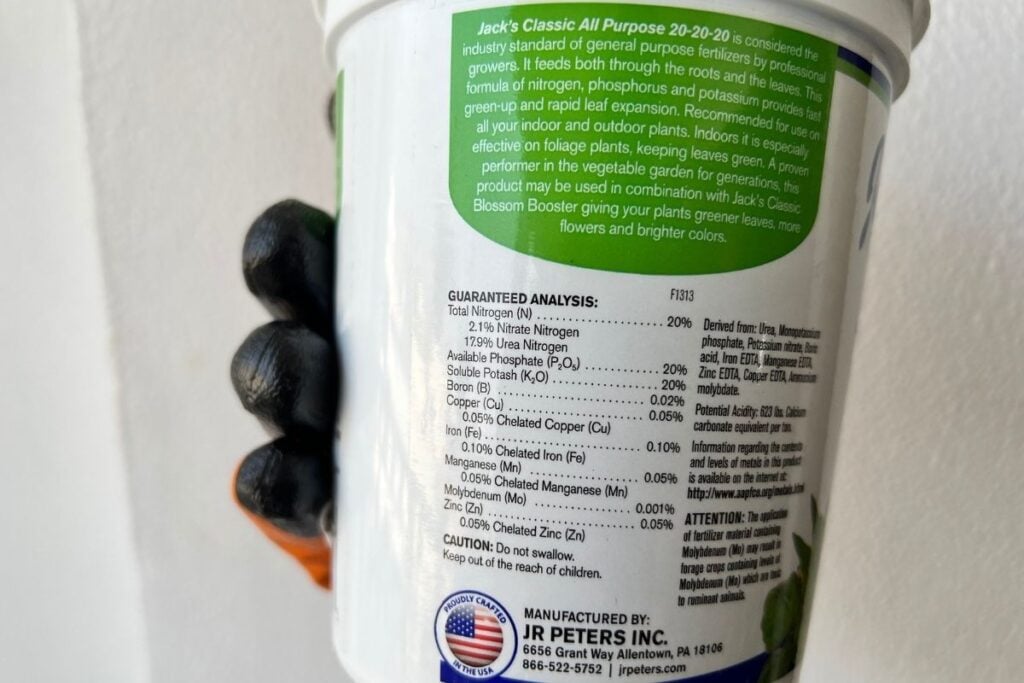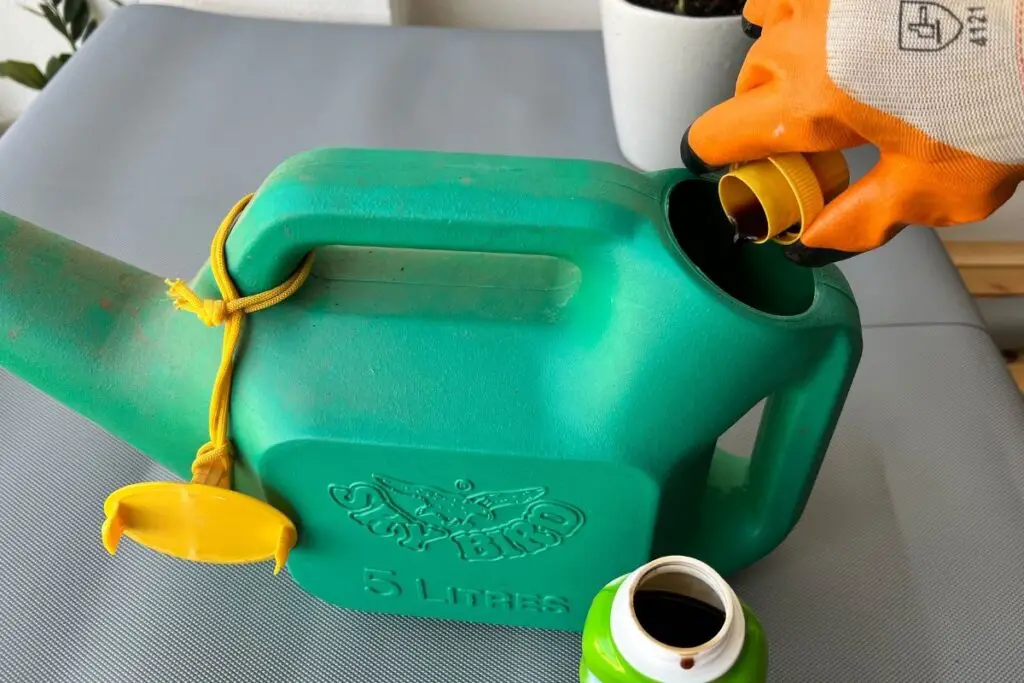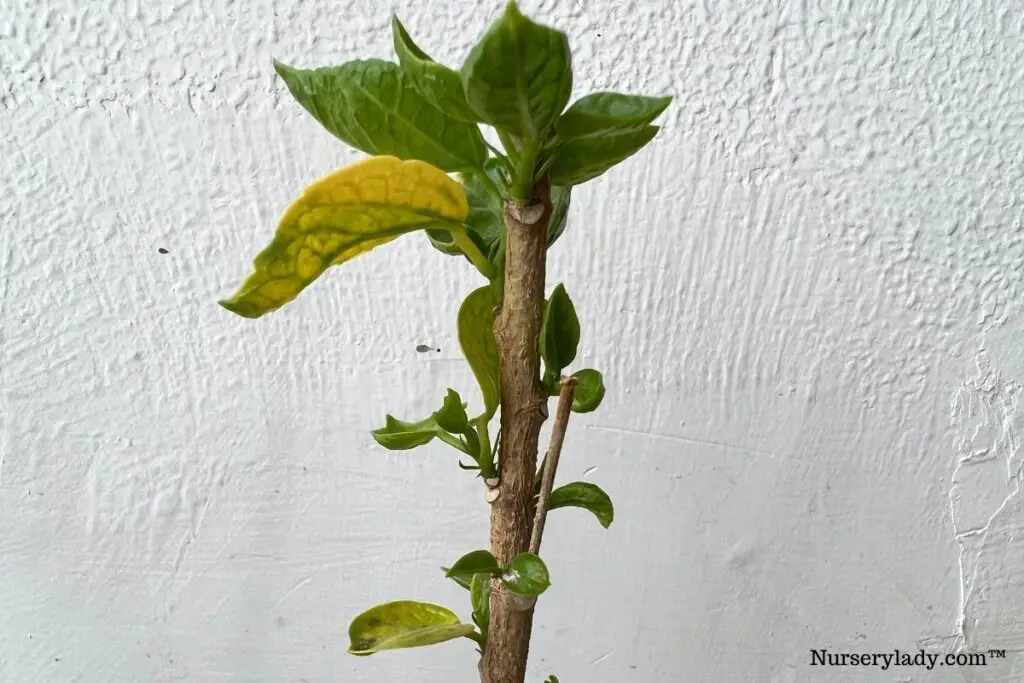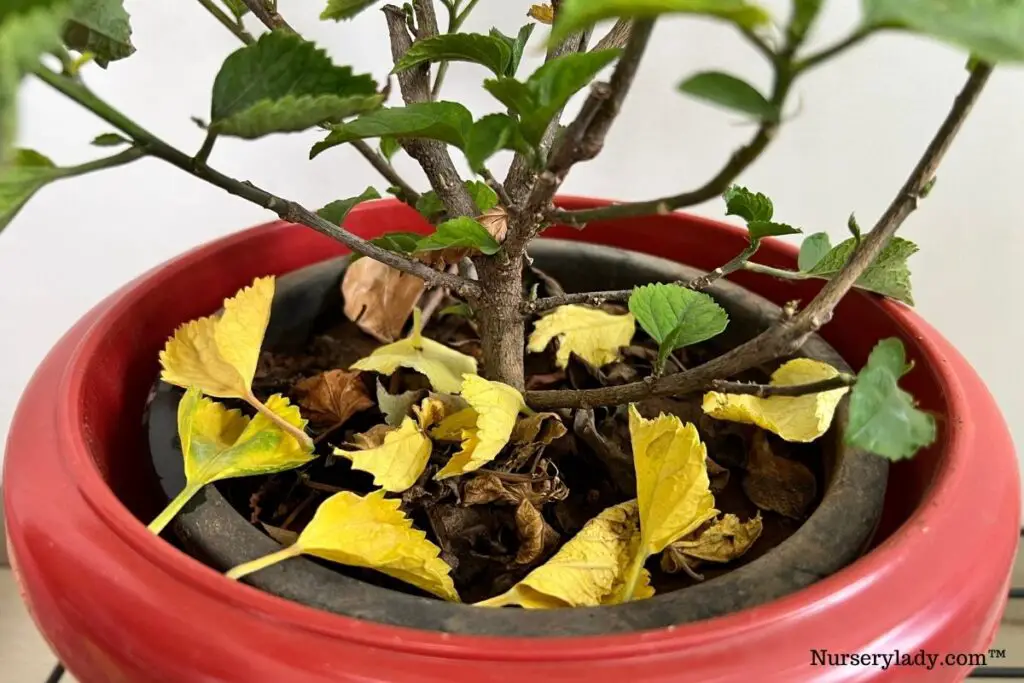Hibiscus is a famous flowering plant that comes from the tropics. Their colorful flowers can entirely change your garden and create a great visual interest. But, for profuse growth and flowering, fertilizing is necessary.
The ideal fertilizer for Hibiscus is the one that is rich in Nitrogen and Potassium but low in Phosphorus. A fertilizer with an NPK ratio of 12-4-8 or 17-5-24 can be used regularly, whereas you can use a 10-10-10 fertilizer occasionally. Liquid and slow-release fertilizers are ideal for Hibiscus.
There are many things to know about the fertilization of Hibiscus. Along with the best time and frequency, I will share the best commercial and homemade fertilizers for Hibiscus.

Why is fertilizing important?
Fertilizing Hibiscus is essential for their good health.
The soil alone won’t be able to provide all the nutrients.
Besides, Hibiscus plants are heavy feeders, especially for blooming.
It is essential to provide them with a diet having nitrogen, Phosphorus, and potassium as their primary nutrients.
They will also need minor nutrients like magnesium, calcium, iron, etc.
When and how often should I fertilize my Hibiscus plant?
The best time to fertilize Hibiscus plants is in spring and summer.
Hibiscus enjoys gentle but frequent fertilization.
Proper fertilization encourages good growth and frequent blooms.
If you use a slow-release fertilizer, feed the Hibiscus in four stages:
- During the early spring
- When the plant has finished its first cycle of blooming
- Halfway through the summer
- At the beginning of the winter
Apply the time-release fertilizers every 3-6 months for good results.
Don’t use slow-release fertilizers in the cold winters.
Use slow-release at the time of new leaf growth 2-3 times throughout the growing months.
If you use liquid fertilizers, you have to use them more frequently than mentioned above.
It is because liquids get easily absorbed, work instantly and finishes quickly.
Apply liquid fertilizers every 2 weeks in the spring and summer.
Reduce the frequency and apply it once every 4 weeks during the autumn and winter.
When new flower buds grow, apply liquid fertilizer through late summer or early fall, when the weather cools down.
How do I choose the best fertilizer for Hibiscus?
To select the best fertilizer, you need to know the plant’s requirements.
Below are some factors you need to consider while choosing the best fertilizer for Hibiscus:
Type of fertilizer

Two types of fertilizers are common, liquid and slow-release.
Both will be good for Hibiscus.
The difference is in the time it takes to start working.
A liquid fertilizer instantly gets absorbed and works quickly.
You will see results within a few days.
Using it regularly gives the plant instant nutrients in time, especially between the blooming cycles.
The excess fertilizer, too, will get washed away with each watering.
Time-release fertilizers slowly reach the plants.
It will feed gradually without any excess amounts.
Results will be visible after 1-2 weeks of application.
One advantage is that it lasts for 6 weeks or more.
You don’t have to re-apply it like liquid fertilizers.
Some gardeners declare liquid fertilizers to be the best for Hibiscus because it works instantly and rarely lack nutrients.
Sometimes, the slow-release lacks potassium, and Hibiscus enjoys high potassium.
Still, you can use slow-release, provided you apply potassium separately.
Organic vs. Inorganic fertilizer
Hibiscus will absorb the nutrients both from organic and inorganic fertilizers.
The difference is in the way of delivering the nutrients.
In inorganic fertilizers, the nutrients will be absorbed immediately by the plant.
Inorganic fertilizers are cheaper, easy to apply, have enough nutrients, and are consumed immediately.
However, it depletes the soil’s organic content and burns the roots if overused.
Organic fertilizers need time to get absorbed.
First, the soil microbes feed on the nutrients, and then they are passed to the other parts of the plant.
Though the process is indirect and doesn’t solve nutrient deficiency, the soil’s organic content becomes healthier over time.
Nutrients

Every plant’s three main nutrients are nitrogen, phosphorus, and potassium.
The best fertilizer for Hibiscus would be the one having these three nutrients as the major ones.
Minor nutrients like magnesium, copper, iron, calcium, etc., also play a major role.
They can help the plant flourish. So, check their presence too.
Looking for gardening supplies? We have tested 100's of products before recommending them to you guys. Check out our best pick below:
| Image | Gardening Supplies | Best Price? |
|---|---|---|
 Top
Top Top
Top | Raised Garden Bed Kit | Check On Amazon |
 | XLUX Soil Moisture Meter, Plant Water Monitor, Soil Hygrometer Sensor for Gardening, Farming, Indoor and Outdoor Plants, No Batteries Required | No Results |
 Top
Top Top
Top | 82 Pcs Garden Tools Set and Extra Succulent Tools Set | Check On Amazon |
 | Joeys Garden Expandable Garden Hose with 8 Function Hose Nozzle, Lightweight Anti-Kink Flexible Garden Hoses, Extra Strength Fabric with Double Latex Core, (50 FT, Black) | No Results |
 Top
Top Top
Top | Dual Chamber Compost Tumbler | Check On Amazon |
 Top
Top Top
Top | Sunnyglade Plant Stakes | Check On Amazon |
 Top
Top Top
Top | Organic Cold Pressed Neem Seed Oil | Check On Amazon |
 Top
Top Top
Top | Mighty Mint Gallon :-Insect and Pest Control Peppermint Oil | Check On Amazon |
 Top
Top Top
Top | Scotts DiseaseEx Lawn Fungicide | Check On Amazon |
 Top
Top Top
Top | Jacks Classic 20-20-20 All Purpose Fertilizer | Check On Amazon |
 Top
Top Top
Top | 30,000 Seeds Pollinator Attracting Wildflower Mixture | Check On Amazon |
 Top
Top Top
Top | Survival Vegetable Seeds Garden Kit-Over 16,000 Seeds | Check On Amazon |
NPK value
NPK stands for three major nutrients:
- Nitrogen (N): Helps in leaf development
- Phosphorus (P): Helps in root growth and flowering
- Potassium (K): Helps to regulate the metabolic processes, provide support for photosynthesis, and fight diseases.
Hibiscus uses more nitrogen and potassium and less Phosphorus.
During planting or new growth in spring, use a fertilizer with an NPK value of 10-10-10.
It will give the plant balanced nutrition for a start-up.
Over time, when the plant grows, use a fertilizer with an NPK value of 12-4-8 or 17-5-24 for regular feeding.
Now, what are these numbers?
A fertilizer with an NPK value of 10-10-10 means that the fertilizer consists of 10% of each nitrogen, Phosphorus, and potassium.
And the rest are minor nutrients like magnesium, copper, calcium, iron, sulfur, etc.
Plant’s needs at different times
When you find new leaf growth in the spring, slow-release fertilizers will be best for them.
The feeding will be lesser, gradual, and steady.
When the flower buds develop, apply liquid fertilizers throughout the growing months.
Soil condition
The soil is an essential factor when it comes to fertilizing.
The type of soil determines whether it will be able to hold the nutrients after fertilizing or not.
Soil having more organic content will help retain the nutrients for lengthy periods.
If your Hibiscus plant is in the ground, organic fertilizer works best.
It will help increase the organic content of the soil.
Cheap vs. costly
It is always better to use a high-quality fertilizer than the cheaper one.
Since the question is about the life of your precious Hibiscus plants, you must choose the best one for them.
Cheap fertilizers fail to dissolve in water.
They get washed away even before your plant can absorb them.
Moreover, they contain low-quality harmful chemicals.
Frequent applications will damage and kill the plant.
Best commercial fertilizers for Hibiscus

Below I have shared some suitable commercial fertilizers for Hibiscus.
Though you can use any product of your choice, you can use these if you don’t want to waste time by further research.
Exotic Blend by Dr. Earth (Best overall fertilizer)
This organic fertilizer is both pet and people-friendly and good for other tropical plants.
It contains sufficient proteins, multi-minerals, carbohydrates, humic acids, and trace elements to increase soil health.
It will encourage large and vibrant flowers.
The NPK value is 6-4-6.
One drawback is that it has a disgusting smell, due to which it is difficult to use for indoor Hibiscus plants.
You can buy Exotic Blend by Dr. Earth here.
How to use it?
Mix 5 cups of this fertilizer with 5 gallons of water and let it sit for one day.
Strain the liquid and use it as mulch.
You can use it both as foliar or soil application.
You can even use it as a compost starter to enrich the quality of the compost pile.
For adult in-ground Hibiscus, use ½ cup of fertilizer at every end of the plant and work it around the soil base. Water the soil to spread it everywhere.
Repeat every 2 months from early spring to late summer.
For adult container plants, Hibiscus, use 2 tablespoons for a 6-inch pot.
For new plants, add one cup of fertilizer to the planting hole.
Later on, add another cup to the soil around the plant base.
Mix 2 tablespoons into the soil and water well for newly potted plants.
Ensure the pH level remains between 5 and 6.5.
Earthpod Hibiscus and Tropical Flower Formula (Best slow-release)
This fertilizer is best for indoor and outdoor Hibiscus plants and other tropical flowering plants like Bougainvillea, Bird of Paradise, Passion Flower, etc.
It consists of 100 spikes.
These will enhance root growth, leaf growth, blooming, and colors.
One package goes on for 4 years for a single Hibiscus.
But, it is expensive for gardeners with a big collection of tropical flowers.
Store these spikes in a cool and dry location. Avoid humid areas as that can cause early pod corruption.
You can buy Earthpod Hibiscus and Tropical Flower Formula here
When and how to use it?
Bury the spikes in the soil close to the base of the plant.
After that, water the soil to activate it.
Make sure that the soil properly surrounds the pods.
Only then will the nutrients get released and absorbed evenly from every corner of the soil.
Apply them every 2-3 weeks.
- For small plants, use only 1-2 pods per plant.
- For medium-sized plants, use 2-4 pods.
- Lastly, use 4-8 spikes for the big matured plants.
Hibiscus and Flowering Tropicals Fertilizer by Nelson Plant Food (Best granular)
It contains all major and some minor nutrients to give the plant enough food for good growth and blooms.
You can use it for both grounded and potted plants.
Use them for Rose of Sharon, Texas Star Hibiscus, and Mallow Hibiscus.
It will increase the growth of the vines, encourage frequent blooms and help the plant endure dry weather.
The NPK value is 10-4-12. Since it is high in nitrogen and potassium, it would give great results.
You can buy Hibiscus and Flowering Tropicals Fertilizer by Nelson Plant Food here.
When and how to use it?
- Use them once a month in their growing months.
- Mix 1 tablespoon of the fertilizer with 1-gallon of water.
- At the time of transplanting, add 1 and 1/4th cup of the fertilizer in 1 cubic foot of the growing medium before planting. After that, water the soil thoroughly to activate it.
- For landscape Hibiscus, sprinkle ½ cup of the fertilizer over a 10 square feet planting site and water them well.
Hibiscus Plant Food by Carl Pool (Budget-friendly granular)
This granular fertilizer consists of an NPK value of 10-4-12.
Due to this ratio, it will work very well for Hibiscus.
It also contains other micronutrients and will maintain a suitable pH level.
One single application is enough for producing buds and flowers.
However, regular applications will result in frequent and colorful blooms the whole year.
This will even help the plants suffering transplant shock.
You can buy Hibiscus Plant Food by Carl Pool here.
When and how to use it?
- Apply it every 4-6 weeks in the growing season.
- For potted plants, sprinkle 1.5 teaspoons of the fertilizer evenly in a 6-inch container.
- Water the soil very well after application.
Hibisgain by BGI Fertilizers (Good for potted Hibiscus)
If you grow outdoor Hibiscus in containers, this fertilizer is good.
The NPK value is 12-6-8, and it also has other micronutrients.
The only problem is that it is meant only for Hibiscus.
Using over other plants can result in plant injury.
How to apply?
- You don’t have to mix it. Directly apply it to the soil. Use it once in the growing season. Take less quantity but use frequently.
- One tablespoon is enough for pots measuring 6 inches. Sprinkle it evenly all over the soil and water the soil.
- Don’t apply them to the leaves.
- Though they are ideal for potted plants, you can also use them for the in-ground plants. The measurement depends on the size of the plant. For example, use 2 tablespoons for a 2-3 feet plant.
Regular application will result in glossy leaves and big vibrant blooms that will last long.
They will flower throughout the growing season frequently.
You can buy Hibisgain by BGI Fertilizers here.
Miracle-Gro All Purpose Fertilizer (Best water-soluble)
Being a liquid fertilizer, this will instantly begin to work after application.
You can use them for any other plant as they won’t burn the plants.
The NPK value is 24-8-16.
You can buy Miracle-Gro All Purpose Fertilizer here.
When to use it?
- Apply this every 1-2 weeks in the growing months.
- Read all the instructions before using because misapplication will disturb the soil’s pH level. It will do more bad than good.
- You can use them for all Hibiscus plants, i.e., potted, in-ground, indoors, and outdoors.
Best homemade fertilizers for Hibiscus
| Element | How To Use |
|---|---|
| Vinegar | Mix one cup of vinegar with one-gallon water and pour the solution into the roots. When the solution settles down, it will release the nutrients in the soil. Avoid the leaves. |
| Banana peels | Banana peels are a great source of potassium but average nitrogen content. You might have to provide nitrogen separately. Chop the peels and add them to the soil mixture. You can also add the peels to the compost piles and then use them as mulch when fully composted. |
| Wood ash | Sprinkle some wood ash into the soil. It is a good source of potassium. |
| Coffee grounds | Collect the used coffee grounds on paper and dry them in the sunlight for 2-3 days. After that, sprinkle them over the soil. |
| Eggshells | Collect the eggshells and grind them into powder. Sprinkle them around the plant over the soil. |
| Banana peels, eggshells and Epsom salt | Collect four banana peels and 3 eggshells and dry them out. Add 4 tablespoons of Epsom salt and grind them into fine powder. Add 75ml of water to the mixture, shake well, and water the plant with this mixture. |
| Fish tank water | If you have a fish tank, use the dirty water for the plants. The excretions of the fish are rich in nitrogen. Using this as fertilizer will give them enough nitrogen. |
Effects of over-fertilization

Hibiscus needs a lot of fertilizers to thrive.
But, they too will face over-fertilization at some point.
After all, nothing is good in more amounts.
Overuse of fertilizers can make the plant weak and affect its system.
The signs of over-fertilization are:
- Leaf edges have crispy, dark brown burning signs due to excessive nitrogen.
- Leaves turning yellow
- Leaves falling off due to shock.
- Few or no blooms in the plant
- Excessive Phosphorus will stop new growth and even kill them.
How to fix over-fertilization?
- Immediately stop fertilizing for a few weeks, for example, 2 weeks.
- Use pure water only to water the plant. Avoid tap water.
- While restarting fertilization after recovery, use mild concentrations and dilute them.
- If your plant is in a pot, water the plant thoroughly to flush off the accumulated salts. Do this once a month.
- Reduce the quantity of fertilizer.
- Keep an eye on any new signs of burning. Don’t stress the plant further.
- If you are using liquid fertilizers, reduce the frequency in winters. Avoid slow-release during the winters.
Effects of under-fertilization

Soil alone cannot give all the nutrients to the plant.
So, you have to provide them with enough nutrients through fertilization.
Without fertilization, the plant will become weak.
Some signs of nutrient deficiency are:
- Lack of nitrogen causes stunted growth.
- Lack of magnesium leads to yellow leaves with dark green veins. The lower leaves will stay green but won’t be much glossy.
- The leaves turn brown and fall off.
- The lack of iron will make the young leaves at the tip of each branch yellow with dark green veins.
How can I provide them with enough nutrients?
- Don’t forget to fertilize Hibiscus. Follow the routine I shared previously.
- If you are using liquid fertilizers, you can use them during winters. Use it once a month.
- If you are unsure about the chemical ones, use homemade fertilizers. They might be slow workers, but they won’t harm your plant.
- If your plant shows a deficiency in a single nutrient, like nitrogen or magnesium, use fertilizer accordingly. Use homemade fertilizers. For example, the dirty water of the fish tank is rich in nitrogen.
Extra tips about fertilization
- It is better to avoid overuse. It can affect the blooming.
- Use less amount if confused. Less is more.
- While using the chemical products, follow the instructions given on the labels.
- Always make the dose half than the recommended dose.
- For fertilizing the in-ground plants, use a water hose to feed and water them together. Or, mix the fertilizer in a bucket and water the plants using a glass or mug.
- Never apply fertilizer in dry soil. Always dampen the soil before application to prevent root burn.
- The plant will rarely flower in winters. It is natural. So, don’t increase the frequency.
- Resume fertilizing once the temperature becomes warm.
- The plant will need more fertilizer if they are under the full sun.
- It is better to fertilize in the early morning when the sun is less intense. Water-soluble fertilizers will evaporate under the sun.
- If you live in a hot region, water the plant before and after fertilization. It will cool down the soil and avoid root burns.
Final words
The best fertilizer is the one that is medium in nitrogen, low in Phosphorus, and high in potassium.
Fertilize the Hibiscus, as I have shared in the article. Increase the frequency when they are under direct sunlight, especially in summers. Reduce the frequency in winters. Don’t increase the frequency if you find rare blooming in winters.
Never skip fertilizing unless the plant shows over-fertilizing issues. For colorful blooms, use fertilizers having all nutrients in the right ratio. All the fertilizers I have shared will show positive results for Hibiscus.
Reference: Wikipedia, ASPCA, Louisiana State University Agricultural Center, American Society for Horticultural Science, Tropical Hibiscus by Texas A&M University, Sciencedirect.
